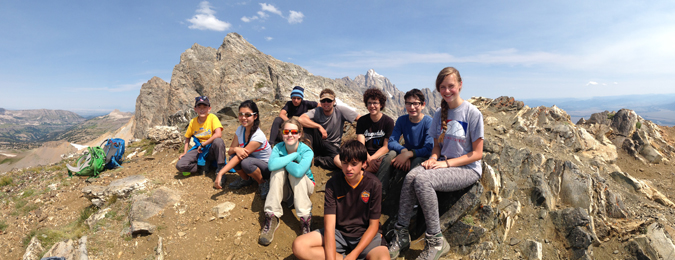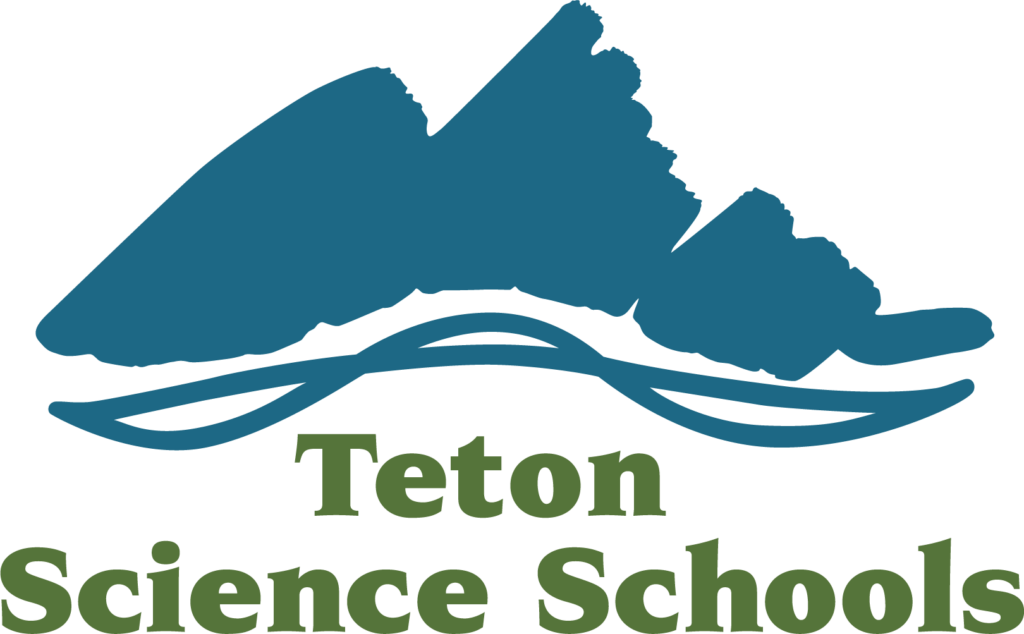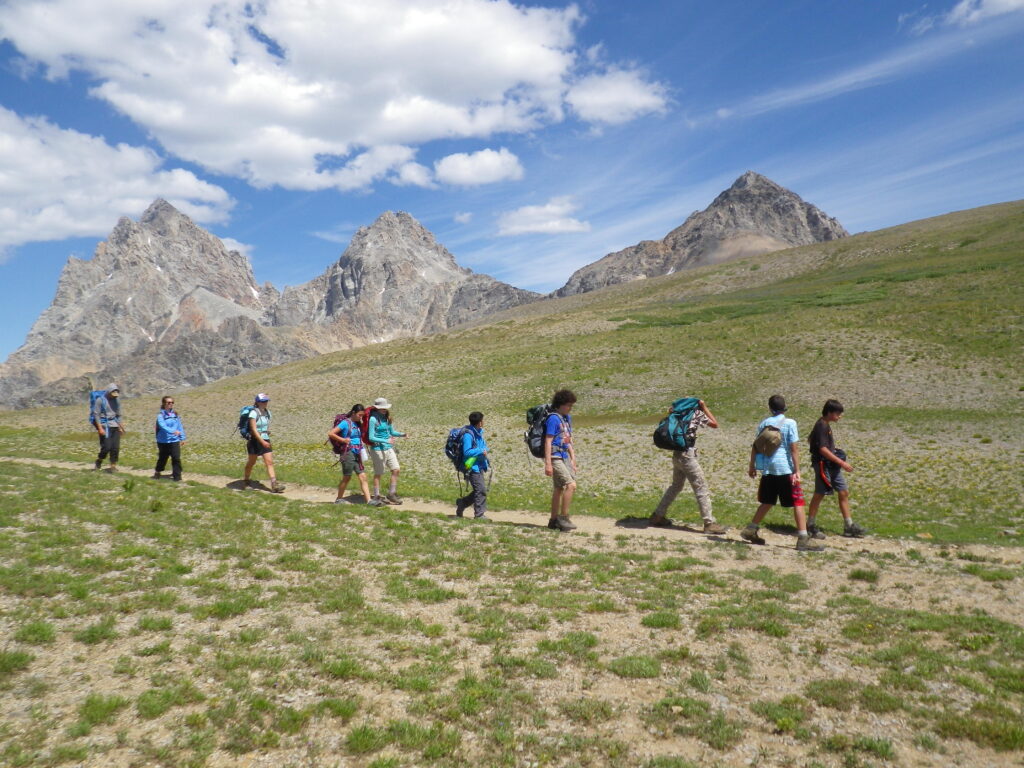 The Ultimate Grand Teton Adventure (UGTA): ten days, five spent backpacking on the Teton Crest, all while researching the cutest animal in the Tetons. Eleven middle and high school students from across the country signed up for this Jackson Hole odyssey. Every one of them had previously attended another Teton Science Schools program, mostly with their local schools, and all were coming back for more. I was privileged and challenged to lead this group, and have come away from it with a deeper appreciation for the Wilderness Act and “the benefits of an enduring resource of wilderness” for youth.
The Ultimate Grand Teton Adventure (UGTA): ten days, five spent backpacking on the Teton Crest, all while researching the cutest animal in the Tetons. Eleven middle and high school students from across the country signed up for this Jackson Hole odyssey. Every one of them had previously attended another Teton Science Schools program, mostly with their local schools, and all were coming back for more. I was privileged and challenged to lead this group, and have come away from it with a deeper appreciation for the Wilderness Act and “the benefits of an enduring resource of wilderness” for youth.
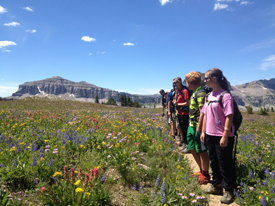 We modeled our journey on the work and values of Olaus and Mardy Murie, the husband and wife team who studied elk and caribou throughout the 20th century and advocated for the Wilderness Act in the 1950s and 1960s. Much more than natural scientists, the Muries cultivated strong personal relationships and friendships. They listened to all stakeholders and came up with creative solutions to improve wildlife management and encourage conservation. Similar adaptability and awareness of others helped the UGTA team survive backcountry travel; challenges included a hornets’ nest in the trail, asthma, twisted ankles, a malfunctioning bear spray canister, and going without a porcelain toilet for five days.
We modeled our journey on the work and values of Olaus and Mardy Murie, the husband and wife team who studied elk and caribou throughout the 20th century and advocated for the Wilderness Act in the 1950s and 1960s. Much more than natural scientists, the Muries cultivated strong personal relationships and friendships. They listened to all stakeholders and came up with creative solutions to improve wildlife management and encourage conservation. Similar adaptability and awareness of others helped the UGTA team survive backcountry travel; challenges included a hornets’ nest in the trail, asthma, twisted ankles, a malfunctioning bear spray canister, and going without a porcelain toilet for five days.
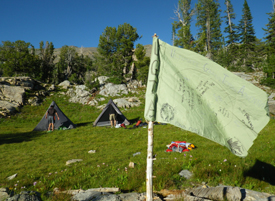
Perhaps the Muries’ largest legacy is a result of their communication skills: without their letter and book writing, charisma, and unceasing advocacy, we would not have gained the 1964 Wilderness Act, which protected more than 9 million acres of federal land and recognized the importance of places where “man himself is a visitor who does not remain.” The UGTA team slept in the Jedediah Smith National Wilderness for four nights, a very tangible reminder of the lasting importance of communication about wildlife and wild lands. In the Murie’s footsteps, we practiced good communication, ensuring that we had the group’s gear, that nobody left a stove back in Jackson or a bag of GORP outside the nightly bear hang.
The influence of the Muries on UGTA didn’t stop there. UGTA was a research expedition, a small version of the Muries’ honeymoon in Alaska and their many elk research trips over the years. Instead of caribou or elk, the UGTA students studied pikas. It’s easy to fall in love with pikas: one glimpse of the tiny lagomorphs, one ‘eeep’ call, and research becomes fun. Pikas live in talus fields and spend the summer stockpiling vegetation to survive the winter. We observed pikas on a scree slope near Hidden Falls, in talus near turquoise Sunset Lake, surrounded by blooming paintbrush, aster, and elephanthead flowers, and on sun-warmed boulders near our Alaska Basin campsite.
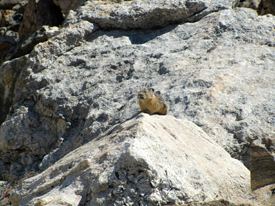
Teton Science Schools’ Field Education school groups have been recording pika behavioral observations since 2009, and we combined our data with this gargantuan existing database. After learning that pikas require temperatures cooler than 78 degrees Fahrenheit to survive, UGTA students hypothesized that pika activity would decrease as temperature increased, and used their math skills to find the relationship between these variables in our large data set. The students were surprised to find that pika behavior is not strongly correlated with temperature. They discussed their findings, positing that the rocks might provide cooler microclimates that allow pika to be active even at warm temperatures.
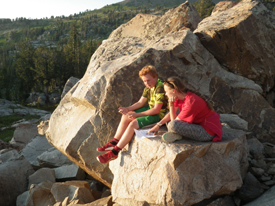 Ultimate Grand Teton Adventure was one of the most challenging and rewarding courses I have ever led. My co-instructors and I led UGTA students up a total of 5,500 feet and along 38 miles of trail over the course of 10 days, much of it at high elevations with heavy packs. We conducted an in-depth research project with real-world implications. But most importantly to me, fifty years after the passage of the Wilderness Act, young people are continuing the Muries’ legacy of scientific research, leadership, and love of nature. Mardy and Olaus would be proud. To learn more about to learn more about the UGTA pika research project, look for our poster at the Murie Center in Moose, WY.
Ultimate Grand Teton Adventure was one of the most challenging and rewarding courses I have ever led. My co-instructors and I led UGTA students up a total of 5,500 feet and along 38 miles of trail over the course of 10 days, much of it at high elevations with heavy packs. We conducted an in-depth research project with real-world implications. But most importantly to me, fifty years after the passage of the Wilderness Act, young people are continuing the Muries’ legacy of scientific research, leadership, and love of nature. Mardy and Olaus would be proud. To learn more about to learn more about the UGTA pika research project, look for our poster at the Murie Center in Moose, WY.
